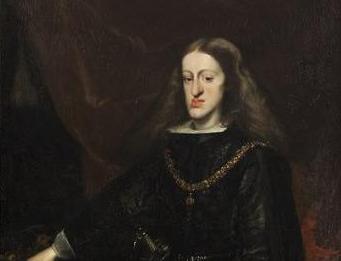The Habsburg dynasty has been known since the 13th century, when its representatives owned Austria. And from the middle of the 15th century until the beginning of the 19th century, they completely retained the title of emperors of the Holy Roman Empire, being the most powerful monarchs of the continent.
Habsburg History
The founder of the clan lived in the X century. Almost no information has been preserved about him today. It is known that his descendant, Count Rudolph, acquired land in Austria in the middle of the XIII century. Actually, southern Swabia became their cradle, where the early representatives of the dynasty had a clan castle. The name of the castle is Gabischtsburg (from German - "hawkish castle") and gave the name of the dynasty. In 1273, Rudolph was elected king of the Germans and emperor of the Holy Roman Empire. He won Austria and Styria from the Czech king Przemysl Otakar, and his sons Rudolf and Albrecht became the first Habsburgs who ruled in Austria. In 1298, Albrecht inherited from his father the title of emperor and king of Germany. And subsequently his son was elected to this throne. However, throughout the fourteenth century, the title of Holy Roman Emperor and King of the Germans was still elected between the German princes, and he was not always given to representatives of the dynasty. Only in 1438, when Albrecht II became emperor, did the Habsburgs finally take this title. Subsequently, there was only one exception, when the elector of Bavaria made a royal dignity in the middle of the 18th century.

Heyday of the dynasty
Since this period, the Habsburg dynasty is gaining ever greater power, reaching brilliant heights. Their successes were laid by the successful policy of Emperor Maximilian I, who ruled in the late XV - early XVI century. Actually, his main successes were successful marriages: his own, which brought him the Netherlands, and his son Philip, as a result of which the Habsburg dynasty took possession of Spain. They said about Maximilian’s grandson, Charles V, that the Sun never sets over his possessions - his power was so widespread. He owned Germany, the Netherlands, parts of Spain and Italy, as well as some possessions in the New World. The Habsburg dynasty experienced the highest peak of its power.
However, even during the life of this monarch, the gigantic state was divided into parts. And after his death, it completely broke up, after which the representatives of the dynasty divided their possessions among themselves. Ferdinand I went to Austria and Germany, Philip II - Spain and Italy. Subsequently, the Habsburgs, whose dynasty was divided into two branches, were no longer a single whole. In some periods, relatives even openly opposed each other. As was, for example, during the Thirty Years' War in
Europe. The victory of the reformers in her hit hard on the power of both branches. So, the emperor of the Holy
Roman Empire never again had a former influence, which was associated with the formation of
secular states in Europe. And the Spanish Habsburgs completely lost their throne, losing it to the Bourbons.
In the middle of the XVIII century, the Austrian rulers Joseph II and Leopold II for some time managed to once again raise the prestige and power of the dynasty. This second heyday, when the Habsburgs again became influential in Europe, lasted about a century. However, after the revolution of 1848, the dynasty loses its monopoly on power even in its own empire. Austria is turning into a dual monarchy - Austria-Hungary. The further - already irreversible - disintegration process was delayed only thanks to the charisma and wisdom of the reign of Franz Joseph, who became the last real ruler of the state. After the defeat in the First World War, the Habsburg dynasty (photo by Franz Joseph ) was completely expelled from the country, and a number of national independent states appeared on the wreckage of the empire in 1919.